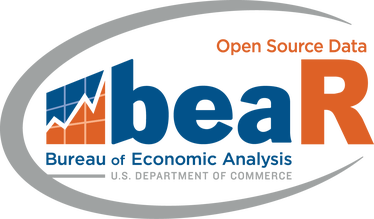At Commerce we understand the importance of data as a valuable national resource and a strategic asset to the U.S. government and its citizens. We are working diligently to develop new tools to make our data more open, accessible and easier to consume for data scientists, data journalists, statisticians and others.
To that end, I am pleased to announce the beaR Library, a new open-source tool developed with the Bureau of Economic Analysis (BEA) for users of the R programming language.
For those of you not familiar with R, it is an open-source programming language and one of the most popular tools in data science today. Over the last 20 years, statisticians from all parts of the world have contributed their innovations to open source R. These contributions mean that developers have access to a large library of cutting-edge scientific algorithms that make it possible to rapidly build intelligent analytic applications.
beaR works with the most commonly used BEA data sets and other data tools, such as its Interactive Data Application, which makes it easier for people to find the numbers they need and its Application Programming Interface, a tool for programmers. The beaR library will be generally available in late October – users will be able to access the tools on BEA’s developer’s page or esa.gov.
beaR is a new way for some data users to search, sift, sort, crunch and visualize BEA’s national, regional and local economic statistics – including data on gross domestic product, personal income, consumer spending and corporate profits. For example, R users who combine BEA’s data with other information sources might include a beer industry analyst building a PowerPoint on local microbrew sales, a graduate student researching the gender pay gap, or a policy wonk exploring how the Medicare Part D prescription drug benefit reduces mortality.
How exactly will beaR improve data usability? The beaR library helps make sense of large, complex BEA data sets by automatically transforming raw data into structured formats for analysis. By reducing the time spent on data wrangling, beaR frees up a user to spend more time on analysis and developing actionable insights.
Creation of the beaR tools – what R users call a package – will make BEA data available in a statistical programming language widely used in the fields of statistics and applied economics. Using R, a search query can return a descriptive line of data that can be easily understood and used by many researchers in the field.
beaR gives users shortcuts and context to easily conduct more meaningful search inquiries. You don’t have to download whole data sets to search their content, or do extra work to parse and scrub the data. Results are easier to reuse and analyze. And users won’t need extensive knowledge of BEA’s economic account structures.
In other words, beaR allows researchers to search and pull exactly the content they need, in the way they need it and to look at the data from all angles. They can do real-time analysis or instantly create charts or other visuals that bring the numbers to life and tell a data story. Other key points include:
- beaR is open-source
- It is driven by BEA’s open API (allowing user software programs to interact with our programs)
- It makes our economic data more consumable by cutting the time it takes to access, analyze and visualize our data.
Data-driven innovation has become a key pillar of 21-st century growth and productivity. Simplifying the use of Commerce data for our customers and America’s citizens has the potential to significantly enhance how the economy works and improve social well-being. Congratulations to Andrea Julca, the BEA economist who developed the beaR library and Jeff Chen, the Chief Data Scientist at Commerce Data Services for their contribution to our mission to democratize access to Commerce data and increasing the potential for more data-driven innovations.
